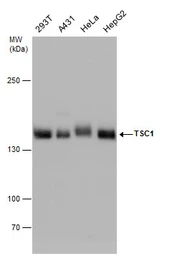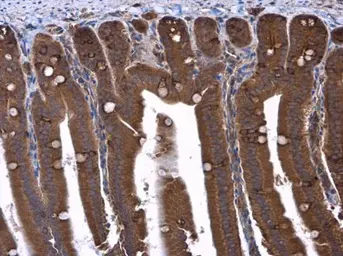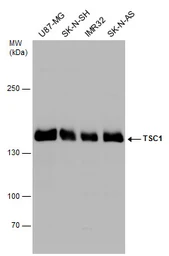Hamartin / TSC1 antibody
Cat. No. GTX130062
Cat. No. GTX130062
-
HostRabbit
-
ClonalityPolyclonal
-
IsotypeIgG
-
ApplicationsWB IHC-P IP
-
ReactivityHuman, Mouse



